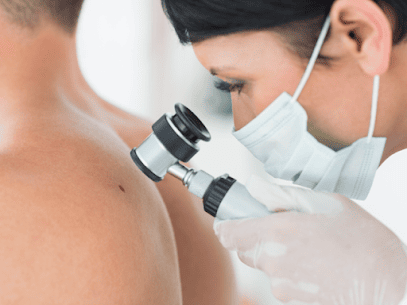Cancer Screening

The significance of early detection in combating skin cancer cannot be overstated. Skin cancer screening plays a pivotal role in identifying potential risks and initiating timely interventions, significantly enhancing the chances of successful treatment. In this guide, we’ll explore what to expect during a skin cancer screening, covering the basics of skin cancer, the purpose of screening, risk factors, recognizing abnormalities, the screening process, frequency recommendations, and preventive measures.
Understanding Skin Cancer
Skin cancer stands as the most commonly diagnosed cancer in the United States and globally, with basal cell carcinoma, squamous cell carcinoma, and melanoma leading the statistics. While non-melanoma skin cancer is more prevalent, melanoma poses a higher risk due to its potential for spreading to other areas of the body. These variations affect diverse populations, emphasizing the importance of understanding the nuances of skin cancer types and their impact.
Purpose of Skin Cancer Screening
The primary goal of skin cancer screening is to detect malignancies at an early, treatable stage. This involves a two-pronged approach: self-examinations for personal awareness and professional examinations by dermatologists. The treatability of skin cancer significantly increases when detected early, underlining the critical role that screening plays in improving outcomes.
Risk Factors for Skin Cancer
Recognizing the risk factors for skin cancer is crucial for informed decision-making regarding screening. Factors such as the presence of numerous moles, characteristics of moles, personal or family history of skin cancer, indoor tanning use, severe sun damage, and fair skin contribute to heightened risks. Notably, ethnic disparities exist, with people of color more likely to be diagnosed at an advanced stage, necessitating increased vigilance.
Recognizing Abnormal Changes
- Understanding signs of potential skin issues is crucial.
- Acknowledging the urgency in seeking professional evaluation is vital.
- Any new, changing, symptomatic, atypical, or outlier lesions warrant immediate attention.
- Promptly schedule an appointment with a dermatologist for thorough examination.
- Utilize online directories to find qualified professionals.
- Seek referrals from primary care doctors for recommendations.
What to Expect During a Skin Cancer Screening
During a skin cancer screening, a thorough examination is conducted, encompassing the entire body, including the scalp and spaces between fingers and toes. Any identified moles or lesions that are new, changing, or causing discomfort receive closer examination. Dermatoscopes, handheld devices that enable detailed skin evaluation, may be utilized. In cases where a biopsy is recommended, the process involves a quick sampling of skin for laboratory testing, with results typically available within one to two weeks. Further treatment plans, such as surgery, are arranged if cancer is detected, with advanced cases referred to oncologists.
Frequency of Skin Cancer Screening
The frequency of skin cancer screening is individualized, with several factors influencing the recommended schedule. Considerations include age, the number of moles, presence of complex or atypical moles, personal history of melanoma, and family history of skin cancer. High-risk individuals may be advised to undergo screenings annually, or even every three or six months. Open communication with healthcare providers is essential for establishing the most appropriate screening schedule.
Preventive Measures
Preventing skin cancer involves adopting sun protection strategies, such as avoiding exposure between 10 a.m. and 4 p.m., using protective clothing, hats, sunglasses, and applying broad-spectrum sunscreen with an SPF of 30 or higher. Outdoor sunbathing and indoor tanning bed use should be avoided. Regular self-examinations are recommended, following the ABCDE rule for monitoring moles: Asymmetry, Borders, Colors, Diameter, and Evolution. Any changes warrant prompt evaluation by a dermatologist.
Conclusion
In conclusion, prioritizing skin health through regular screenings, awareness of risk factors, and adopting preventive measures are paramount. Collaboration with healthcare professionals, particularly dermatologists, ensures personalized care and enhances the effectiveness of skin cancer screening. By integrating these practices into our lives, we contribute to the early detection and prevention of skin cancer, promoting overall skin health and well-being. Stay vigilant, stay informed, and prioritize your skin health journey.

